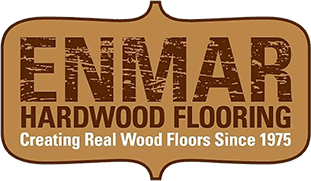Hardwood flooring in dry climate
Q. Being that i live in Arizona I was told that I cannot have solid hardwood flooring because we live in a “dry” climate and have a concrete floor. What is your take on hardwood flooring in dry climate?
A. I think I would have been out of business 34 years ago if that statement was actually factual! As a consumer, you need to listen to those companies that all they do is hardwood flooring and not just someone who is trying to make a sale! You can have solid hardwood flooring here in Arizona. If you have a concrete slab, we would need to install a moisture barrier and a plywood subfloor prior to nailing the wood.
The solid hardwood flooring can be purchased either finished or unfinished on the face of the wood. The underside of the wood is unfinished to either unfinished or prefinished solid. There is no barrier between the wood and the concrete, thus the moisture barrier and plywood subfloor needs to be installed. Even though the concrete is dry, it will retain moisture during rain/monsoons. Lack of either of these is not a reason to forgo the moisture barrier and subfloor. Solid wood can not be glued to the concrete. There are those installers/sales persons that will say it can. We have repaired many a floor that was glued directly to the concrete and now has water damage issues.
At ENMAR we will follow the guidelines set out by the NWFA. With the moisture barrier/subfloor installed and then the wood the total thickness of the flooring is 1 ½”. This is not a reason for NOT installing solid hardwood. We create customized transitions from tile/wood, carpet/wood/vinyl/wood. These transitions are a graduated decline from the highest point to the lowest point. We have a sample of a transition in our showroom. Regarding our climate, actually we live in the best state to have solid wood due to the fact water and wood don’t mix. We live in a stable environment in regards to humidity. Prior to the actual flooring installation to start, we would deliver the solid wood flooring to the jobsite a minimal of 7 days prior to installation. The reason being is that we treat wood like a living organism. Wood will normally expand and contract in relation to the temperature/humidity surrounding it. Wood also has a property that it will absorb. The mills we deal with are located in the Midwest/South and East coast. Their humidity factor is significantly different than ours. When we receive the wood from the mill, we moisture test the wood. Typically the moisture content will be a minimum of 7-8% and we need to achieve the moisture content below 6%. When we deliver the wood to your home the HVAC/Heater needs to be operational for a full week prior to installation and remain operational even after the installation is complete. The doors and windows needs to have been installed also. The reason is that all the moisture that is present in the air, especially from a new build construction, needs to be circulated out of the house. If this does not occur, since wood absorbs moisture/liquid from its living environment, the wood will absorb this moisture. Once the wood is delivered to your house, we moisture test it at delivery time and then again one week later. Typically within one week the excess moisture in the wood will have a chance to evaporate out and the installation can proceed. If the moisture content is not low enough, we will let it sit for another week and then retest.


